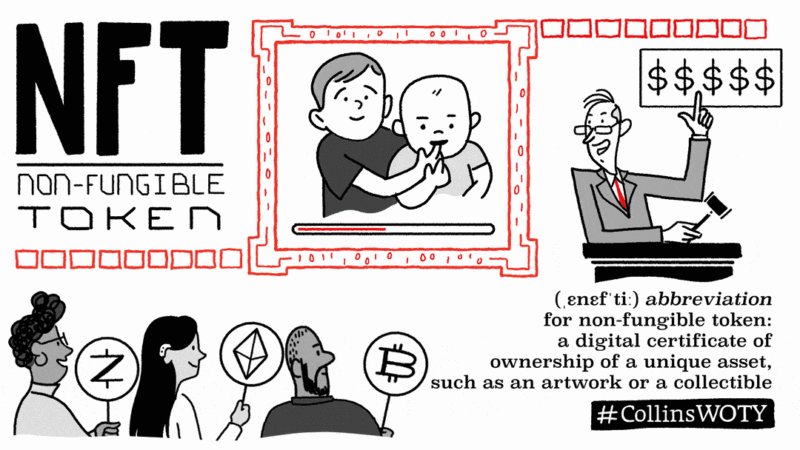
Enlarge / Collins put out this .gif to help you grok just how non-cheugy NFTs can be. (credit: Collins)
Perhaps the best thing to come from this year's widespread adoption of the term "Non-Fungible Token" (NFT) is greater public comfort with the word "fungible." What a perfectly cromulent word, fungible, even if it sounds like a foot powder.
Now, dictionary-maker Collins has picked NFT as its "word of the year" for 2021, mostly because people are making SRS $$$ from the blockchain-based tech. One of those people is of course the artist who goes by "Beeple"; his collection of 5,000+ everyday digital art pieces went for $69 million earlier this year, which every subsequent article on NFTs has been required to mention. This sale made Beeple one of the best-paid artists on earth. The New York Times did not love this, arguing that the gross-out and meme-based imagery of much of Beeple's work was puerile. Also, Beeple "struggles with flesh; as in many video games, the skins appear waxy and desiccated. It’s as if every remaining human in this cryptouniverse has scurvy, though maybe that is what happens when you subordinate your flesh to the screen." Yikes. While I agree that this was a pretty dumb way to spend $69 million, NFTs definitely have utility; for instance, just imagine how much fun it would be to buy this critic an NFT of a high-quality "OK Boomer" meme?
As for what NFTs actually are, my explanation would probably get lost in a rant about energy efficiency and the nature of originality in the digital age. Before you know it, I, too, would be banging on about "scurvy." So I'll let Collins try to explain things:
No comments:
Post a Comment